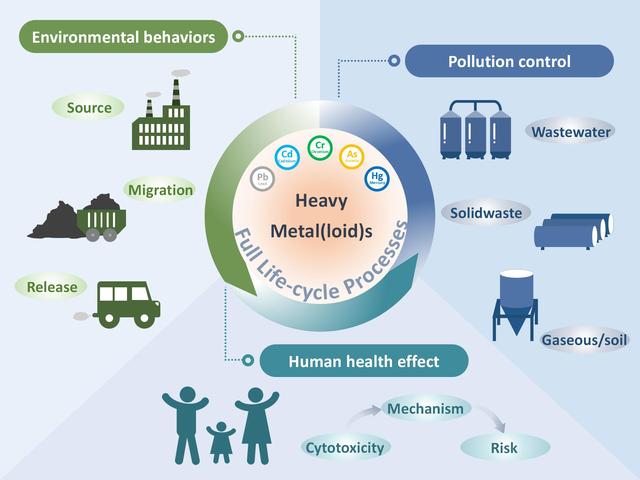
Highlights
Lessons learned from ENMs study provide a paradigm for other emerging contaminants.
Health risks depend on multiple environmental factors, media and organisms.
Environmental health research should be conducted in natural environments.
A holistic approach is advocated to ensure risk assessment and management.
Call for research on ecological and human health effects of emerging contaminants.
Abstract: Heavy metal(loid)s (HMs) have caused serious environmental pollution and health risks. Although the past few years have witnessed the achievements of studies on environmental behavior of HMs, the related toxicity mechanisms, and pollution control, their relationship remains a mystery. Researchers generally focused on one topic independently without comprehensive considerations due to the knowledge gap between environmental science and human health. Indeed, the full life cycle control of HMs is crucial and should be reconsidered with the combination of the occurrence, transport and fate of HMs in the environment. Therefore, we started by reviewing the environmental behaviors of HMs which are affected by a variety of natural factors as well as their physicochemical properties. Furthermore, the related toxicity mechanisms were discussed according to exposure route, toxicity mechanism and adverse consequences. In addition, the current state-of-the-art of available technologies for pollution control of HMs wastewater and solid wastes were summarized. Finally, based on the research trend, we proposed that advanced in-operando characterizations will help us better understand the fundamental reaction mechanisms and big data analysis approaches will aid in establishing the prediction model for risk management.
Keywords: Heavy metal(loid)s; Full life cycle; Toxicity; Environment; Pollution control
DOI: 10.1016/j.eehl.2022.11.003